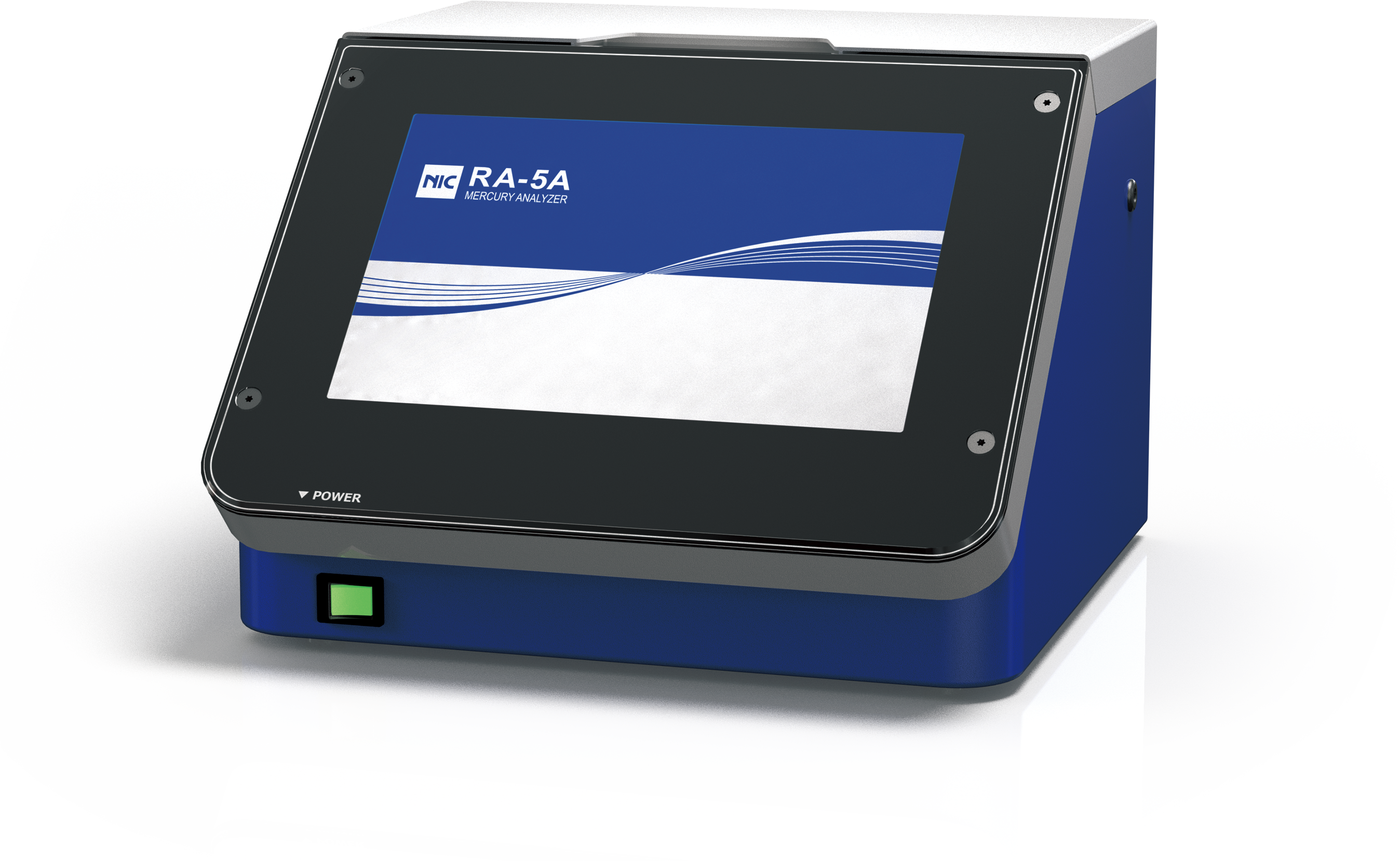15 Apr How to Choose the Right Mercury Analyzer

Mercury is one of the most toxic and hazardous elements that presents a clear threat to human health. Unfortunately, many industrial processes have resulted in mercury being released into the environment, where it contaminates the air, water and soil. Although the use of mercury is now highly regulated to prevent exposure, there are still instances where it is necessary to test for the presence of mercury in the environment. Laboratories and field workers therefore must have access to the right equipment that will provide them with the most accurate readings so they can determine if mercury is present and make plans for mitigation.
Finding the right instruments for mercury analysis requires technicians and lab workers to understand their needs as well as which techniques will be most effective given the circumstances. Read on to learn more about some of the most common techniques used to detect mercury in the environment as well as what to know before choosing a mercury analyzer.
Why Mercury Contamination is a Serious Matter
Although its use in common household items such as thermometers and light switches has been significantly curtailed over the years, mercury and related organic compounds are still byproducts of many industrial processes. This is a serious issue, because exposure to mercury can cause a wide range of debilitating and even fatal health issues. Mercury poisoning has been known to lead to severe problems for the digestive, immune and nervous systems within the human body.
In addition to being extremely toxic, mercury also is highly volatile, which only adds to the potential danger. In its pure elemental state, mercury evaporates at room temperature, creating a toxic vapor that is odorless and invisible to the naked eye. It also can be absorbed by plant and animal life, especially fish. The bioaccumulation of mercury in potential food sources also makes analysis critical for preventing contamination.
In the latter half of the 20th century, numerous pieces of legislation were enacted in the United States to restrict the use of mercury and prevent it from being released into the environment. These include the Clean Air Act, the Clean Water Act and the Safe Drinking Water Act.
Understanding Mercury Analysis Techniques
There are three main techniques employed to detect trace mercury in environmental and biological samples:
- Cold Vapor Atomic Absorption Spectroscopy (CVAAS) — This measurement technique relies on atomic absorption spectroscopy, where mercury atoms absorb light at a specific wavelength (typically 253.7 nm), with the concentration determined as a proportion of the light being absorbed. Unlike traditional atomic absorption methods that require high temperatures to vaporize samples, CVAAS operates at room temperature by converting mercury into its elemental vapor form. This is the most common reference method for drinking water analysis under the Safe Drinking Water Act and the Clean Water Act for waste discharges. CVAAS is used in regulatory methods such as US EPA 245.1, 245.2 & 245.5, SW-846 7470A & 7471B, ASTM D3223-02, EN-1483, ISO 12846, APHA 3112, JIS K0102 & more. Current NIC Mercury Analyzers using this technique include the RA-7000A Series, MA-3000, MA-3 Solo, EMP-3, SGM-9, and WA-5A.
- Cold Vapor Atomic Fluorescence Spectroscopy (CVAFS) — The key difference between this measurement technique and CVAAS is that rather than observing the absorption of light along a particular wavelength, CVAFS detects mercury by looking for the emitted fluorescence from mercury atoms as they return to their ground state after absorption of ultraviolet light (typically 253.7nm). CVAFS is a reference method for the Clean Water Act for waste discharges. This technique is used in regulatory methods such as US EPA 1631E, US EPA 245.7, ISO 17825 and ISO 12846. NIC Mercury Analyzers using this technique include the RA-7000F (Coming Soon), RA-4300FG+, PE-1000, and WA-5F.
- Direct Analysis by Thermal Decomposition — In this measurement technique the sample is combusted at high temperature, mercury vapor is released and collected onto a gold trap and then measured. Unlike the previous two techniques, this does not require the sample to be digested before measurement. The sample can be introduced directly into the instrument for direct combustion with analysis by atomic absorption spectroscopy. This process also creates less waste because it does not require reagents like concentrated acids. Current NIC Mercury Analyzers using this technique include the MA-3000, MA-3 Solo, and PE-1000.
Knowing How to Select the Right Mercury Analyzer for the Situation
There are several factors that should be considered when deciding which type of mercury analyzer will provide the best performance under the circumstances. Among the most important considerations when making this decision include:
Sample Matrices — There are so many different types of samples that must be processed during mercury analysis, depending on the industry. For example, the oil and gas sector may need to process samples of crude oil for trace amounts of mercury. Companies within the food processing market may be concerned about the presence of mercury in seafood or water. Technicians working in the field may be seeking traces of mercury vapor in the air around them. It’s important to know what kind of samples will be tested because it may impact the results of the test. For example, thermal decomposition is not ideal for testing otherwise-clean water because of the lower concentration of mercury typically present in those samples. Typically, CVAAS or CVAFS are most often used for liquid samples, with thermal decomposition being used for many solid samples.
Requirements for Sensitivity — Choosing an instrument for the analysis of mercury also calls for knowing the specific requirements for the sensitivity of the instrument. For example, research may call for higher detection capabilities than simply meeting regulatory requirements. It’s also worth noting that certain regulatory frameworks also may require the use of a specific type of mercury analyzer for uniformity in the results. Depending on the situation, a company may need to meet certain thresholds for the presence of mercury as determined by a customer or client. No matter what the situation may be, it’s critical to know what the expectations are to ensure the equipment selected will be capable of meeting them. In general, CVAFS is a more sensitive technique than CVAAS, making it capable of detecting mercury levels in smaller concentrations.
Sample Digestion — Another important factor is whether the sample should be digested prior to analysis. Digestion is necessary for CVAAS and CVAFS, but this can be a costly and time-consuming process that also can result in hazardous waste byproducts. This means that if thermal decomposition will provide adequate results, many technicians prefer to avoid analysis processes that require digestion. However, the trade-off in this case would be the compatibility of thermal decomposition with the specific sample matrix and how well the accuracy of the process meets requirements.
Budgetary Limitations — Once the proper technique has been determined, the next step is to make sure the mercury analyzer fits into the laboratory’s budget. Fortunately, AGS Scientific offers a wide range of instruments including tabletop and portable models to fit an organization’s budget.
Protecting workers and the general public from the hazards of mercury contamination should be a high priority for enterprises across multiple sectors. AGS Scientific is there to answer the call with a wide range of devices from leading manufacturer Nippon Instrument Corporation (NIC), the global leader in laboratory, field and process mercury analyzers. From cold vapor analyzers to instruments designed for thermal decomposition, NIC is renowned throughout the world for the accuracy and precision of its equipment for direct mercury analysis. To learn more about what we have to offer, reach out and speak with a member of our staff today to get help finding the mercury analyzer that will provide the best fit for the requirements.

